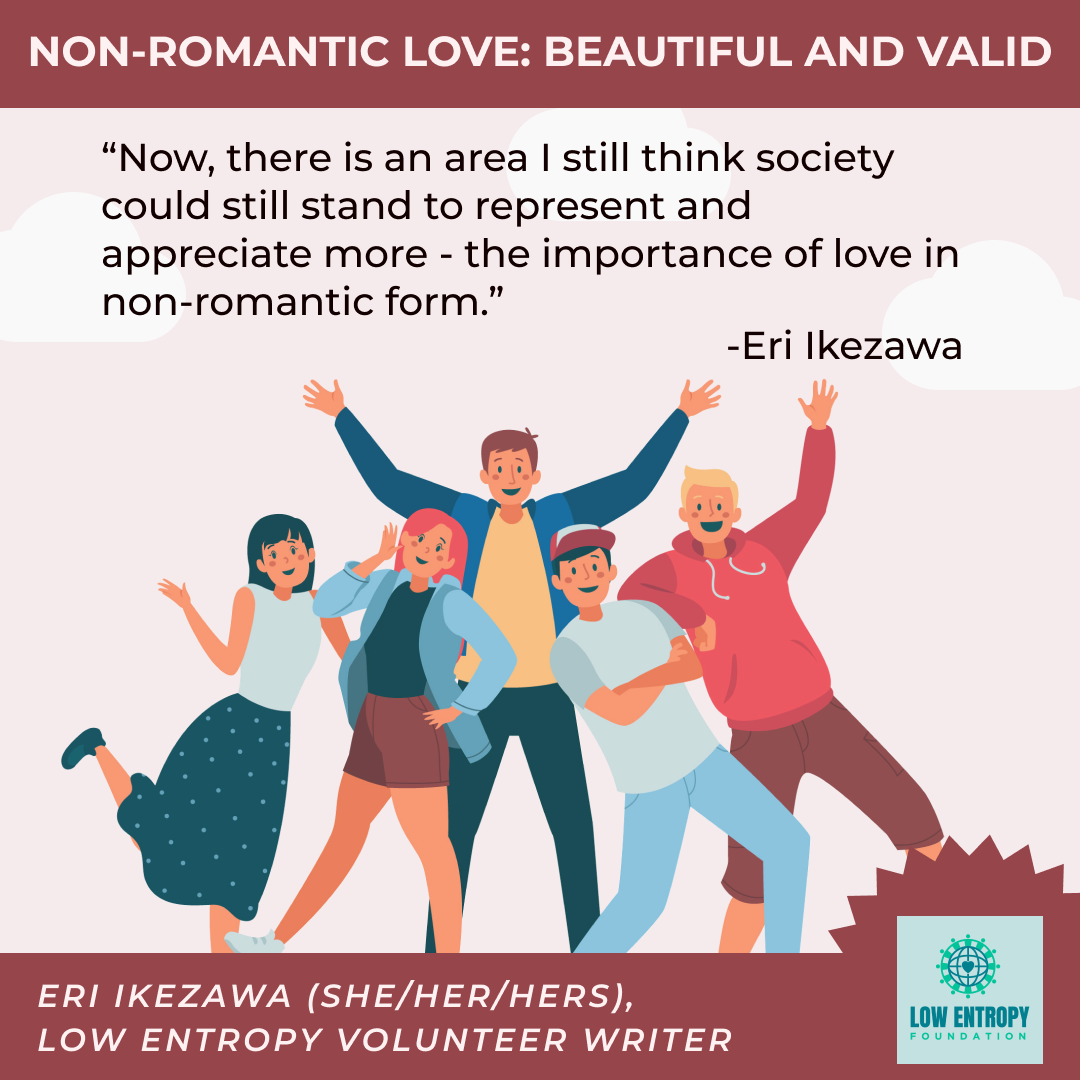Faizah Latif (she/her/hers), Low Entropy Volunteer Writer
Romantic relationships for some are a blessing, and for others they present a challenge. Valentine’s Day looks different for each individual, as does the journey of love. When an individual makes the brave step towards leaving a relationship that does not serve them well, it is not an easy decision to come to terms with. Surviving through the toxic relationship, they may not even fully realize that they are in an abusive relationship. It may take friends and family to initially bring up the topic, while the victim of abuse will likely deny it and make excuses for the toxic behaviour. However, one can deeply reflect and identify the symptoms of abuse, and then make the decision of whether or not they want to continue enduring pain in the relationship they are in. Friends and family play a vital role in this process because they will be able to identify how the individual has changed throughout the relationship, likely damaging signs that have impacted their self esteem greatly. Individuals may also realize through therapy sessions, or come to terms themselves, that they are in the middle of what feels like an impossible situation.
Fortunately, there is hope and a way out, even though it may not feel like it in the moment. It takes a courageous leap of faith. Things will be scary and unclear at first, however it is for the better and greater things are coming. When someone is abused in any way whether emotionally, physically, financially, or spiritually, the individual experiencing the abuse becomes immune to it. When it turns into a daily routine, they start to think it is normal. It takes a great deal of self-reflection to check in and honestly evaluate where we are. Is this person making me become my worst version of myself? Do I have the capacity to grow with this person? Do they make me happy and feel safe? In being truly honest with answering these questions, it will be clear whether or not the relationship in front of us is healthy or not.
It can be daunting to imagine what life will be like without this person, and it can also feel very lonely. This is where the right support system helps incredibly. Attending a support group to speak to like-minded individuals will help in developing friendships and allow you to know that every other individual in the room went through a similar experience to you. As this is a huge step in changing one’s way of living, it is important to embody self-compassion and to remember that your journey will look different to everyone else’s. As well, there is no linear path to healing and there will be ups and downs to face. Moments of uncertainty and feelings of self-blame will present themselves. This is not the case, and it is important to acknowledge that no one deserves to be abused.
This new journey ahead feels overwhelming, and it is as if a new life begins. However, this does not necessarily have to be a bad thing. In fact, a new beginning signifies growth, resilience, and a way to carve your own path. Leaving a toxic relationship allows you to develop self-awareness and an ability to truly understand the traits that are healthy vs. toxic in a relationship. This can relate to any relationship in our lives, not necessarily a romantic one. Through leaving something toxic, we can better assess our personal boundaries and how we will not let someone mistreat us again.
Speaking from my personal experience, a few years ago I left a toxic relationship that did not serve me well. It was very difficult in the moment; however, I am now in a much better place. I was able to learn from this experience. After I left the toxic relationship, I went back to school and started working on myself. I developed new hobbies and truly discovered who Faizah is. I have now almost completed my master’s degree in social work, and I hope to use it to advocate for other women in a similar position that I found myself in. I also run a weekly support group for women to discuss Narcissistic Relationships and how we can empower ourselves to set boundaries and live our true purpose.
Valentine’s Day and love does not always have to be about a romantic relationship, rather we can focus on self-love and determining our self-worth, instead of chasing it in someone else. We need to focus on being kind to ourselves and to remember that we are exactly where we are meant to be. If you have left a toxic relationship, I want you to take a moment to acknowledge how much strength you have. May you be a guiding light for others and continue to carve your way towards success.
—
Faizah is an aspiring social worker, currently in the process of completing her Master in Social Work (MSW) degree. She enjoys self development and advocating for important causes in the community. Writing is one of Faizah’s passions, and she is honoured to share her writing on the Low Entropy platform in the hopes of providing inspiration.





















